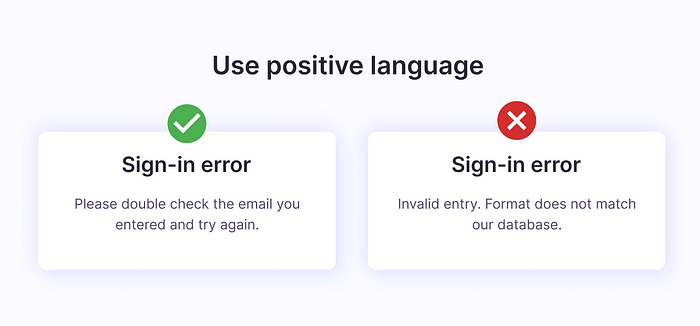

Putting the ‘U’ in UX Writing to Improve User Experience
source link: https://uxplanet.org/putting-the-u-in-ux-writing-to-improve-user-experience-6fc555295e74
Go to the source link to view the article. You can view the picture content, updated content and better typesetting reading experience. If the link is broken, please click the button below to view the snapshot at that time.

Putting the ‘U’ in UX Writing to Improve User Experience
How to Prioritize User Needs in UX Writing

The world of writing is packed full of advice for aspiring writers. So much so that a question as simple as whom to write for can have multiple answers. For instance, author Stephen King suggests writing for oneself in his memoir, “On Writing,” whereas in his book, “Storyworthy,” Matthew Dicks advocates writing for an ideal reader (one person). While both pieces of advice have their place in creative writing, they, unfortunately, do not apply to UX Writing.
I’ll explain why in a moment. But first, let’s look at what UX Writing is.
UX writing, also known as microcopy, is a type of writing that is designed to enhance the user experience of digital products. In simple terms, UX writers craft the text you see on a digital product’s interface. (For a deeper delve into what UX writing is, you can read this article by CareerFoundry).
The key takeaway from this definition is that the primary function of the words in an interface is to support the users.
And so, if you’re writing to support your users, who are typically a diverse set of people, writing with yourself or an ideal reader in mind would be a bad idea. Instead, you must consider the diverse perspectives and backgrounds of the users to ensure that your writing is inclusive and accessible.
Now that we’ve stated what not to do, let’s get to the good part: Where do you start when writing for interfaces?
One word: Empathy.

To create content that truly resonates with the users, you must start with empathy. Empathizing with your users means establishing a connection with them — understanding their needs, their pain points, and recognizing what motivates them to engage with your product.
It is only by starting with empathy that you can effectively fulfill the “U” in UX writing.
But how do you empathize with the users?
The following are some ways to create empathetic content in UX writing:
User Research
The best way to gain insight into the users’ needs, goals, and pain points is by hearing from them directly. There are various research methods to obtain both qualitative and quantitative insights into user behavior. Some common ones are:
- Surveys
- Interviews
- A/B Testing
Through proper research, you’ll not only understand the user’s perspective but also get a feel for the type of language they use. This can help to guide you when crafting copy.
Conversation Mining
You know those emails you get from customers, whether for inquiries or complaints? They are a gold mine. Not only can they give you a glimpse of the kind of language your customers use, but they also reveal the particular challenges the users have. This can help inform the copy you create. For example, if users are inquiring if a process is free, this could be an indicator to clarify any fees or charges on the interface.
Other places you can mine conversations from include:
- User interview scripts
- Social media comments
- Forum discussions
Competitor Analysis
Check out how similar and more successful products are engaging with their users. What needs, goals, and pain points are they targeting? Then use the information as a guide when crafting your own copy.
Test and Iterate
It is necessary to note that UX writing is not a one-off process. It is iterative. Once you create the content, you have to test it with users to ensure it meets their needs and expectations. Based on the feedback, you can then refine and improve the content.
Some other ways to ensure that your UX content is empathetic include:
Use Positive Language

Positive language creates a more empathetic tone and helps users feel more engaged and motivated. Avoid negative language or language that creates a sense of blame or guilt.
Be Concise and Clear

No one has time to read huge chunks of text. In fact, people usually scan text, picking only what’s important. This is why it’s essential to keep your copy short and sweet — only add what’s necessary and break it down into digestible chunks.
Use the User’s Language
For your content to resonate with the user, you must use the language and terminologies they are used to. It not only makes it easier for them to achieve their goals with your product, but it also helps to build a sense of familiarity and trust. Content mining is a great way to
Empathy is a crucial part of UX writing. By putting yourself in the user’s shoes and designing content that is user-centered and emotionally resonant, you can create a more engaging and satisfying user experience.
Recommend
About Joyk
Aggregate valuable and interesting links.
Joyk means Joy of geeK